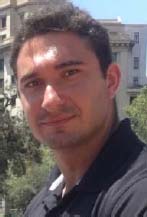|
|
|
| |
| ABSTRACT |
|
Scientific studies related to resistance training have considered many variables; however, the tempo of movement of particular repetitions is often neglected or not reported in resistance training practice and research. The aim of the study was to determine the effect of different duration of the eccentric (ECC) phase of movement on one-repetition maximum test (1RM) results during the bench press exercise (BP). Twenty-one strength trained females (age = 23.4 ± 2.2 years, body mass = 52.3 ± 6.7 kg), with a minimum one year of strength training experience took part in the study. The experiment was conducted following a randomized crossover design, where each participant completed the 1RM test in the BP with three different duration times of the ECC movement: 2/0/X, 4/0/X, 6/0/X. Concentric (CON) movement was performed with maximal velocity (X). The ANOVA with repeated measures were used to compare the differences between the analyzed variables. The results of the study indicated the maximal load in the 1RM test was significantly higher during the BP with the 2/0/X tempo compared to 6/0/X (p < 0.01) and 4/0/X tempos (p < 0.01). Therefore, the results indicated that the longer the duration of the ECC phase of movement, the greater the decrease in the result of the 1RM test. The 1RM test procedure should include information about the movement tempo used during the test protocol. |
| Key words:
Performance, resistance, strength, duration of repetition
|
Key
Points
- The tempo of movement during resistance exercise impact on the result of 1RM test. The longer duration of ECC phases affects the lower value of 1RM test result.
- Significant differences in result of 1RM were observed between the 2/0/X, 4/0/X and 6/0/X tempos.
- The 1RM test procedure should include information about the movement tempo used during the trial.
- When different movement tempos are used in test protocols, the 1RM test should be performed independently for each tempo.
|
Maximum strength is the maximum capability of a muscle or a muscle group to generate tension. It is often measured by the one repetition maximum test (1RM) (Seo et al., 2012). The 1RM test is defined as the maximal load that can be lifted once with a correct technique and over a specific range of motion. The 1RM test is relatively simple and requires inexpensive non-laboratory equipment (Kraemer et al., 2006). The 1RM test is considered the gold standard for assessing muscle strength under non-laboratory conditions (Levinger et al., 2009). Due to the wide use of 1RM tests, it is important that this test is a reliable measurement, however, it has not been established what effect different tempos of movement have on the results of the 1RM test as yet. Training at a specific movement tempo is a concept in resistance training, where the duration of particular phases of movement is strictly controlled and manipulated (Wilk et al., 2018a). Since there is no standardized method within the scientific literature, in this paper we applied a unified description of the movement tempo using the following terms and three-digit combination: eccentric / isometric / concentric (e.g. 2/0/X), where each digit determined the duration [s] of a particular phase of the movement. “X” represented the maximum possible movement tempo during the concentric (CON) phase. Previous research has shown that changes in movement tempo during resistance exercise have a significant impact on the number of performed repetitions, time under tension as well exercise intensity, and as a consequence influence adaptive changes related to strength, power and muscular hypertrophy (Hunter et al., 2003; Keeler et al., 2001; Wilk et al., 2018a; 2019). However, despite the fact that training with a controlled movement tempo influences acute responses (endocrine, metabolic, fatigue) and chronic changes (muscular strength and hypertrophy) following resistance exercise, only one study has examined the impact of different movement tempos on the maximal load lifted during 1RM testing (Headley et al., 2011). In the study of Headley et al. (2011) the participants reached 3.7% greater maximal loads during the 1RM test with the 2/0/2 tempo compared to the 4/0/2 tempo, what indicates that the tempo of movement affects 1RM test results. In addition to the tempo of movement used, other factors may affect the maximum amount of weight an individual can lift. Age, sex, limb lengths and circumferences, body mass, muscle mass, training routine and status, the rate of contractions, and the time distribution between eccentric and concentric phases could all possibly influence the maximal load able to be lifted in a specific exercise (Reynolds et al., 2006). Considering that the extension of the eccentric (ECC) phase of movement by 2 s (2/0/2 vs. 4/0/2) caused a 3.7% decrease in results of the 1RM test (Headley et al., 2011), it can be hypothesized that an additional extension of the duration of the ECC phase would induce further decreases in 1RM testing performance compared to a faster movement tempo. However, there is limited available data that evaluates such differences, especially with slow tempos of movement. Therefore, the aim of this study was to determine the effects of different movement tempos, with changes only in the duration of the ECC phase of movement during the bench press exercise (BP) on 1RM test results. Our initial hypothesis was that the movement tempo would have a significant impact on the maximal load lifted in the 1RM test. The purpose of the study was to determine whether there was a significant difference in the maximal load obtained during the 1RM test using different movement tempos. All testing was performed in the Strength and Power Laboratory at the Jerzy Kukuczka Academy of Physical Education in Katowice. The experiment was conducted following a randomized crossover design, where each participant performed three familiarization sessions and three different testing protocols 7 days apart. During each experimental session, participants completed the 1RM test protocol using the bench press (BP) exercise with different tempos: 2/0/X eccentric fast tempo (ECCFAS), 4/0/X eccentric medium tempo (ECCMED) and 6/0/X eccentric slow tempo (ECCSLO). For example, the 2/0/X tempo denotes a 2 s ECC phase, no pause during the transition phase (0), “X” represents the maximum possible movement tempo during the CON phase. Participants were required to refrain from resistance training 72 hours prior to each experimental session, were familiarized with the exercise protocol and informed about the benefits and risks of the experiment before expressing their written consent for participation in the study. Study participantsTwenty-one healthy strength trained females (age = 23.4 ± 2.2 years, body mass = 52.3 ± 6.7 kg), with a minimum one year of strength training experience (2.3 ± 1.47 years) took part in the research. Participants were free of any pathologies and injuries and were instructed to maintain their normal dietary habits over the entire study period and not to use any dietary supplements or stimulants for the duration of the study. In order to exclude the effect of motor learning, at least 3 weeks before the study, all participants practiced the bench press exercise with different movement tempos. Prior to study commencement, participants provided written informed consent; they were also allowed to withdraw from the experiment at any moment. This study was carried out in accordance with the recommendations of the ethical standards outlined in the Declaration of Helsinki, 2013. The protocol was approved by the Bioethics Committee for Scientific Research, at the Academy of Physical Education in Katowice, Poland (10/2018).
Procedures
Familiarization sessionThree weeks before the main experiment, the participants performed familiarization sessions once per week. During the familiarization sessions the participants performed 4 sets of 1 repetition of the BP against a load of ~ 80% 1RM. Two sets were performed with tempo 4/0/X and two sets with tempo 6/0/X. One week before the main experiment 1RM testing was performed. Participants arrived at the laboratory at the same time of day as the upcoming experimental sessions and cycled on an ergometer for 5 minutes at an intensity that resulted in a heart rate of approximately 130 bpm, followed by a general upper body warm-up. Next, participants performed 15, 10, 5 and 3 BP repetitions using 20, 40, 60, and 70% of their estimated 1RM, respectively, with a volitional tempo of movement. Hand placement on the barbell was set at 150% individual bi-acromial distance. Participants then executed single repetitions with a 5 min rest interval between successful trials. The load for each subsequent attempt was increased by 1.25 to 5 kg, and the protocol was repeated until failure.
Experimental sessionsThe general and specific warm-up for the experimental sessions was identical to the one used for the familiarization session. The specific BP part of the warm-up was performed with a volitional tempo. Starting from a load of 80%1RM all sets were performed in one of the randomly selected tempos of movement. The participants unracked the bar with assistance of a spotter if required, and began the lift with the arms extended and elbows locked (Algra, 1982). The ‘touch-and-go’ procedure was adopted, in that the bar was required to touch the chest before being pressed to full arm extension (Lockie et al., 2017). In each subsequent attempt, the load was increased by 2.5 to 5 kg. A repetition was deemed to be successful when the bar was moved from the chest to a position of full elbow extension (Lockie et al., 2017). Failure to do this, or bouncing the bar on the chest, disqualified a repetition. A spotter was positioned behind the bar for assistance with lift-off if required and for safety, but did not touch the bar except in the event of a failed lift (Clemons and Aaron, 1997). Participants executed single repetitions in each subsequent set, using a randomly selected tempo of movement:
- 2/0/X eccentric fast tempo
- 4/0/X eccentric medium tempo
- 6/0/X eccentric slow tempo
The rest interval between sets was 5 min, and all 1RM values were obtained within four attempts. The tempo of the eccentric phase was guided by a metronome (Korg MA-30, Korg, Melville, New York, USA). The concentric phase of the BP movement was performed at maximal possible velocity (X). All experimental sessions were recorded by means of a Sony camera (Sony FDR191 AX53). The duration of the eccentric phase of movement was assessed immediately after the completion of each repetition (from recorded data using slow speed playback) to check that the duration was compliant with the required tempo. In order to ensure high reliability of data collection, four independent, experienced researchers performed data analysis from the Sony camera. All participants completed the described testing protocol.
Statistical analysisAll statistical analyses were performed using Statistica 9.1 and Microsoft Office, and results were presented as means with standard deviations. The Shapiro-Wilk, Levene and Mauchly’s tests were used in order to verify the normality, homogeneity and sphericity of the sample data variances, respectively. The ANOVA with repeated measures were used to compare the differences between analyzed variable. Significance was set at p<0.05. In the event of a significant main effect, post hoc comparisons were conducted using the Tukey’s test. Percent changes and 95% confidence intervals were also calculated. Effect sizes (Hedges’ g) were reported where appropriate. Parametric effect sizes were defined as: large (g > 0.8); moderate (g between 0.8 and 0.5); small (g between 0.49 and 0.20) and trivial (g < 0.2).
The ANOVA with repeated measures revealed a statistically significant difference in 1RM (p < 0.01; Table 1) between tempos 2/0/X, 4/0/X and 6/0/X. Next, the post-hoc test showed the maximal load in the 1RM test was significantly higher during the BP with the 2/0/X tempo compared to 6/0/X (p < 0.01) (Table 2). The result of 1RM test during the BP with the 2/0/X tempo was significantly higher compared to 4/0/X tempo (p < 0.01) (Table 2). Furthermore, the result of 1RM test during the BP with the 4/0/X tempo was significantly higher compared to 6/0/X tempo (p < 0.01) (Table 2; Figure 1). The main finding of the present study is that increased duration of the eccentric phase of movement led to significant decreases in the maximal load reached in the 1RM test. The results of the 1RM test in the 6/0/X tempo (ECCSLO) were significantly lower compared to the 4/0/X (ECCMED) and 2/0/X tempo (ECCFAS). Furthermore, results of the 1RM test in the 4/0/X tempo (ECCMED) were also significantly lower compared to the 2/0/X tempo (ECCFAS). The results of our study show that the longer duration of the ECC phase, the greater the decrease in the result of the 1RM test, that supported our hypothesis. The results are also consistent with Headley et al. (2011) who observed that changes in the tempo of movement influenced the maximal load lifted in the 1RM test. In the study of Headley et al. (2011) participants lifted greater maximal loads during the 1RM test with a 2/0/2 tempo compared to the 4/0/2 tempo. However, additional extending of duration of the ECC phase of movement resulted in a further decrease of the maximal load reached in the 1RM test. It can be thus assumed that additional prolongation of the eccentric phase, for example up to 10 second as in another study of Hatfield et al. (2006) would cause an additional decrease in the value of 1RM results. The main factor influencing 1RM test results considering different tempos of movement is the duration of effort during the ECC phase of movement. In our experiment, this phase lasted 2, 4, and 6 second for the ECCFAS, ECCMED and ECCSLO tempo, respectively. It has been found that significantly greater duration of effort, especially in the ECC phase of movement, can lead to greater muscle exhaustion and consequently premature exercise fatigue (Schoenfeld et al., 2015). Three times longer duration of effort during the ECCSLO compared to the ECCFAS tempo, indicates a higher time under tension (TUT) in the ECCSLO tempo which is related to greater energy expenditure during the longer ECC contraction and greater fatigue, what significantly decreases the load lifted in the 1RM test (Suchomel et al., 2019). The higher result of the 1RM test during a faster tempo compared to slower, can be related not only to the duration of effort in the ECC phase of movement, but also to a more effective use of elastic energy generated during the faster ECC contraction, which is released during the CON phase of the movement (Cronin et al., 2001; Cronin and Henderson, 2004; Newton et al., 1997). Previous research has shown decreases in bar velocity, when the slower ECC phase was used, what was partially linked to less efficient utilization of the stretch-shortening cycle (SSC) (Wilk et al., 2019). Similar relationships were observed when analyzing the effects of post-activation potentiation, which was less effective when slow ECC phases were used in the activation protocol (Wilk et al., 2020). Therefore, a slower movement tempo in the ECC phase presumably increased metabolic fatigue compared to a faster tempo, which may reduce the efficiency of the SSC, and can be partly related to a lower 1RM result. However, it should be noted that despite significant differences in 1RM test results between ECCFAS, ECCMED and ECCSLO, the real difference (kg) in the results of 1RM between ECCFAS, ECCMED and ECCSLO was rather small, reaching between 0 to 2.5kg between ECCMED and ECCSLO tempos and 2.5 to 5kg between the ECCFAS and ECCSLO tempos. While such a difference in results of the 1RM test may be considered small under real life conditions, it can be of great significance in training and competition of elite athletes, especially in competitions where success depends on maximal strength (Grgic et al., 2019). Further, it can be assumed that the use of a similar test procedure in a group of men with a high level of strength may significantly increase the real differences (kg) in 1RM test results between particular movement tempos, which requires further research. Furthermore, the relatively small changes in the results of the 1RM test, especially between the ECCFAS and ECCMED tempo of movement, with increased TUT at a similar exercise load could be beneficial for muscle hypertrophy. Bird et al. (2005) and Burd et al. (2012) suggested that a longer TUT may be beneficial for inducing hypertrophy, especially with a slower ECC phase of movement (Schoenfeld, 2010). A longer TUT causes greater muscular tension, with a higher stress on a small number of active fibers, leading to greater muscle damage (Schoenfeld, 2010), what increases acute mitochondrial, sarcoplasmic and myofibrillar protein synthesis after resistance exercise, stimulating hypertrophy (Burd et al., 2012). Furthermore, a longer TUT promotes compressed blood vessels for a longer period of time that leads to vascular occlusion and additional metabolic stress factor, contributing to increased hypertrophy (Wilk et al., 2018b). Thus, even when the slower tempo of movement causes a slight decrease in 1RM test results, the benefits from increased TUT may be more significant for adaptation following resistance exercise. The results of this study are of significance not only with regard to the procedure and the result of the 1RM test, but also to the procedure of scientific research. In the research procedures describing the impact of a movement tempo on acute and chronic changes in resistance training, specific values of %1RM are commonly used (Wilk et al., 2018a; Mike et al., 2017). However, if %1RM values were calculated based on the 1RM test with a volitional movement tempo, these values would not be reliable in training with a slower movement tempo. The present study has several limitations, which should be addressed. Although the results showed significant differences in the result of the 1RM test between used movement tempos, the direct causes of these changes cannot be directly determined and explained. The research does not indicate whether the main effect occurred due to the higher eccentric component velocity or as a result of an efficient use of kinetic power output associated with the stretch-shortening cycle movements. There was no analysis of direct physiological changes that would be the basis for explaining the obtained results. Furthermore, during testing, the maximal velocity (X) in the CON movement was not measured, which does not allow for determination what was the real value of maximal velocity during the 1RM test with different movement tempos. Another limitation of the study was that the 1RM test was performed using universally standardised grip width, and the use of self-selected grip or close-grip could have caused influenced the results. This aspect requires further research. The results of presented study showed that the tempo of movement during resistance exercise impact on the result of 1RM test. A longer duration of each repetition increased time under tension, indicating a greater physiological demand during its execution, what may affects 1RM test results while using the slower tempo of movement. Therefore, the 1RM test procedure should include information about the movement tempo used during the trial. Furthermore, when different movement tempos are used in test protocols, the 1RM test should be performed independently for each tempo. Future research should also compare the effects of different duration of CON phase or changes in duration of both ECC and CON phases on the level of 1RM test results.
| ACKNOWLEDGEMENTS |
This study would not have been possible without our participants’ commitment, time and effort. The study was supported and funded by the statutory research of the Jerzy Kukuczka Academy of Physical Education in Katowice, Poland. The experiments comply with the current laws of the country in which they were performed. The authors have no conflict of interest to declare. |
|
| AUTHOR BIOGRAPHY |
|
 |
Michal Wilk |
| Employment: Institute of Sport Sciences; Department of Sports Training, The Jerzy Kukuczka Academy of Physical Education in Katowice. World champion in bench press. |
| Degree: PhD |
| Research interests: Strength training, exercise physiology, endocrine responses |
| E-mail: m.wilk@awf.katowice.pl |
| |
 |
Mariola Gepfert |
| Employment: Department of Sports Training, The Jerzy Kukuczka Academy of Physical Education in Katowice |
| Degree: PhD |
| Research interests: Strength training, exercise physiology in woman, functional training |
| E-mail: m.gepfert@awf.katowice.pl |
| |
 |
Michal Krzysztofik |
| Employment: Institute of Sport Sciences; Department of Sports Training, The Jerzy Kukuczka Academy of Physical Education in Katowice |
| Degree: PhD |
| Research interests: Strength training, sports nutrition, exercise physiology |
| E-mail: m.krzysztofik@awf.katowice.pl |
| |
 |
Aleksandra Mostowik |
| Employment: Department of Sports Training, The Jerzy Kukuczka Academy of Physical Education in Katowice |
| Degree: PhD |
| Research interests: Sports nutrition, exercise physiology |
| E-mail: a.motowik@awf.katowice.pl |
| |
 |
Aleksandra Filip |
| Employment: Department of Sports Training, The Jerzy Kukuczka Academy of Physical Education in Katowice |
| Degree: PhD |
| Research interests: Sports nutrition, caffeine, exercise physiology |
| E-mail: a.filip@awf.katowice.pl |
| |
 |
Grzegorz Hajduk |
| Employment: Galen-Orthopaedics, Bierun, Poland |
| Degree: PhD |
| Research interests: Exercise physiology |
| E-mail: ortopedia.hajduk@gmail.com |
| |
 |
Adam Zajac |
| Employment: Prof., Department of Sports Training, The Jerzy Kukuczka Academy of Physical Education in Katowice |
| Degree: PhD |
| Research interests: Strength training, sports nutrition, exercise physiology |
| E-mail: a.zajac@awf.katowice.pl |
| |
|
| |
| REFERENCES |
 Algra B. (1982) A in-depth analysis of the bench press. National Strength and Conditioning Association 4, 6-13. |
 Bird S. P., Tarpenning K. M., Marino F. E. (2005) Designing resistance training programmes to enhance muscular fitness: A review of the acute programme variables. Sports Medicine 35, 841-851. |
 Burd N.A., Andrews R.J., West D.W., Little J.P., Cochran A.J., Hector A.J., Cashaback J.G.A., Gibala M.J., Potvin J.R., Baker S.K., Phillips S.M. (2012) Muscle time under tension during resistance exercise stimulates differential muscle protein sub-fra tional synthetic responses in men. The Journal of physiology 590, 351-362. |
 Clemons J. M., Aaron C. (1997) Effect of grip width on the myoelectric activity of the prime movers in the bench press. Journal of Strength and Conditioning Research 11, 82-87. |
 Cronin J. B., Henderson M. E. (2004) Maximal strength and power assessment in novice weight trainers. Journal of Strength and Conditioning Research 18, 48-52. |
 Cronin J. B., McNair P. J., Marshall R. N. (2001) Magnitude and decay of stretch-induced enhancement of power output. European Journal of Applied Physiology 84, 575-581. |
 Grgic J., Sabol F., Venier S., Tallis J., Schoenfeld B.J., Del Coso J., Mikulic P. (2019) Caffeine Supplementation for Powerlifting Competitions: an Evidence-Based Approach. Journal of Human Kinetics 20, 37-48. |
 Hatfield D. L., Kraemer W. J., Spiering B. A., Häkkinen K., Volek J. S., Shimano T., Spreuwenberg L. P., Silvestre R., Vingren J. L., Fragala M. S., Gómez A. L., Fleck S. J., Newton R. U., Maresh C. M. (2006) The impact of velocity of movement on performance factors in resistance exercise. Journal of Strength and Conditioning Research 20, 760-766. |
 Headley S. A., Henry K., Nindl B. C., Thompson B. A., Kraemer W. J., Jones M. T. (2011) Effects of lifting tempo on one repetition maximum and hormonal responses to a bench press protocol. Journal of Strength and Conditioning Research 25, 406-413. |
 Hunter G. R., Seelhorst D., Snyder S. (2003) Comparison of metabolic and heart rate responses to super slow vs. traditional resistance training. Journal of Strength and Conditioning Research 17, 76-81. |
 Keeler L. K., Finkelstein L. H., Miller W., Fernhall B. (2001) Early-phase adaptations of traditional-speed vs. superslow resistance training on strength and aerobic capacity in sedentary individuals. Journal of Strength and Conditioning Research 15, 309-314. |
 Kraemer, W. J., Ratamess, N. A., Fry, A. C. and French, D. N. (2006)
Strength training: development and evaluation of methodology.
In: Physiological assessment of human fitness. Eds: Maud P. J.,
Foster ,C.. Champain IL: Human Kinetics. |
 Levinger I., Goodman C., Hare D. L., Jerums G., Toia D., Selig S. (2009) The reliability of the 1RM strength test for untrained middle-aged individuals. Journal of Science and Medicine in Sport 12, 310-316. |
 Lockie R. G., Callaghan S. J., Moreno M. R., Risso F. G., Liu T. M., Stage A. A., Birmingham-Babauta A., Stokes J. J., Giuliano D. V., Lazar A., Davis D. L., Orjalo A. J. (2017) An Investigation of the Mechanics and Sticking Region of a One-Repetition Maximum Close-Grip Bench Press versus the Traditional Bench Press. Sports 5, 46. |
 Mike J. N., Cole N., Herrera C., VanDusseldorp T., Kravitz L., Kerksick C. M. (2017) The Effects of Eccentric Contraction Duration on Muscle Strength, Power Production, Vertical Jump, and Soreness. Journal of Strength and Conditioning Research 31, 773-786. |
 Newton R. U., Murphy A. J., Humphries B. J., Wilson G. J., Kraemer W. J., Häkkinen K. (1997) Influence of load and stretch shortening cycle on the kinematics, kinetics and muscle activation that occurs during explosive upper-body movements. European Journal of Applied Physiology 75, 333-342. |
 Reynolds J. M., Gordon T. J., Robergs R. A. (2006) Prediction of one repetition maximum strength from multiple repetition maximum testing and anthropometry. Journal of Strength and Conditioning Research 20, 584-92. |
 Schoenfeld B. J., Ogborn D. I., Krieger J. W. (2015) Effect of Repetition Duration During Resistance Training on Muscle Hypertrophy: A Systematic Review and Meta-Analysis. Sports Medicine 45, 577-585. |
 Schoenfeld B.J. (2010) The mechanisms of muscle hypertrophy and their application to resistance training. Journal of Strength and Conditioning Research 24, 2857-2872. |
 Seo D. I., Kim E., Fahs C. A., Rossow L., Young K., Ferguson S. L., Thienbaud R., Sherk V. D., Loenneke J. P., Kim D., Lee M. K., Choi K. H., Bemben D. A., Bemben M. G., So W. Y. (2012) Reliability of the one-repetition maximum test based on muscle group and gender. Journal of Sports Science and Medicine 11, 221-225. |
 Suchomel T. J., Wagle J. P., Douglas J., Taber C. B., Harden M., Haff G. G., Stone M. H. (2019) Implementing Eccentric Resistance Training—Part 1: A Brief Review of Existing Methods. Journal of Functional Morphology and Kinesiology 4, 38. |
 Wilk M., Golas A., Krzysztofik M., Nawrocka M., Zajac A. (2019) The Effects of Eccentric Cadence on Power and Velocity of the Bar during the Concentric Phase of the Bench Press Movement. Journal of Sports Science and Medicine 18, 191-197. |
 Wilk M., Golas A., Stastny P., Nawrocka M., Krzysztofik M., Zajac A. (2018a) Does Tempo of Resistance Exercise Impact Training Volume?. Journal of Human Kinetics 62, 241-250. |
 Wilk M., Krzysztofik M., Drozd M., Zajac A. (2020) Changes of power output and velocity during successive sets of the bench press with different duration of eccentric movement. International Journal of Sports Physiology and Performance 14, 1-6. |
 Wilk M., Krzysztofik M., Gepfert M., Poprzecki S., Gołaś A., Maszczyk A. (2018b) Technical and Training Related Aspects of Resistance Training Using Blood Flow Restriction in Competitive Sport - A Review. Journal of human kinetics 65, 249-260. |
|
| |
|
|
|
|

